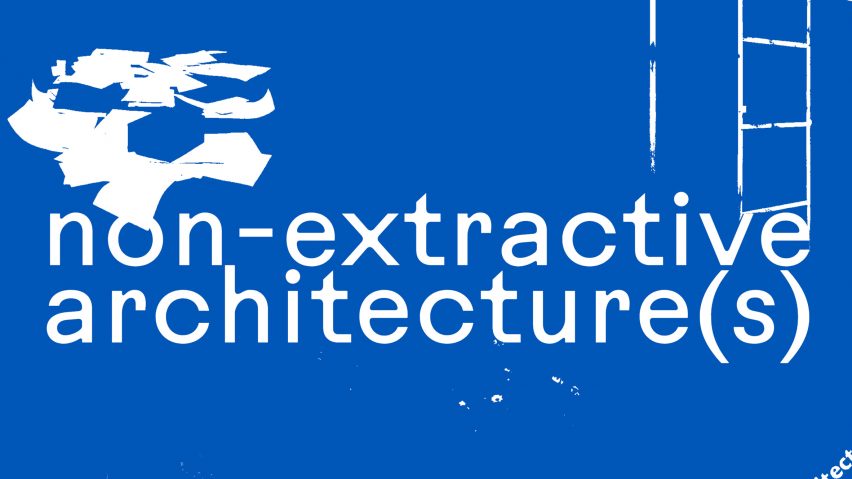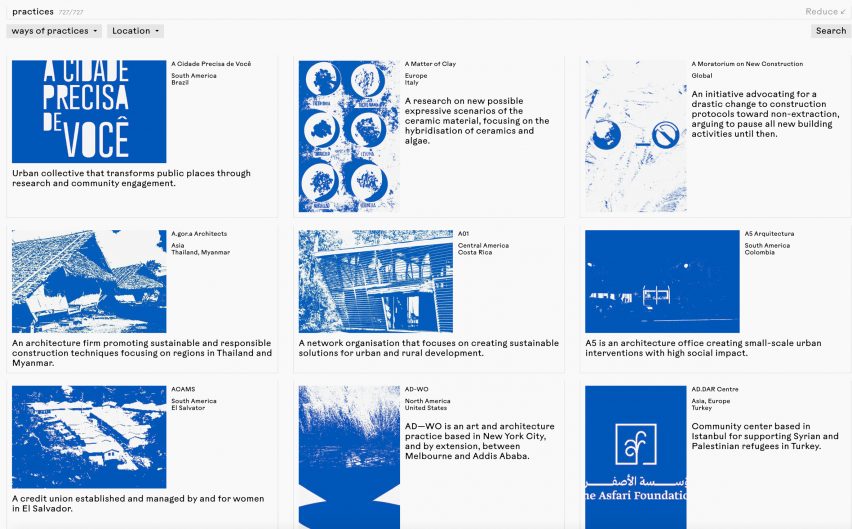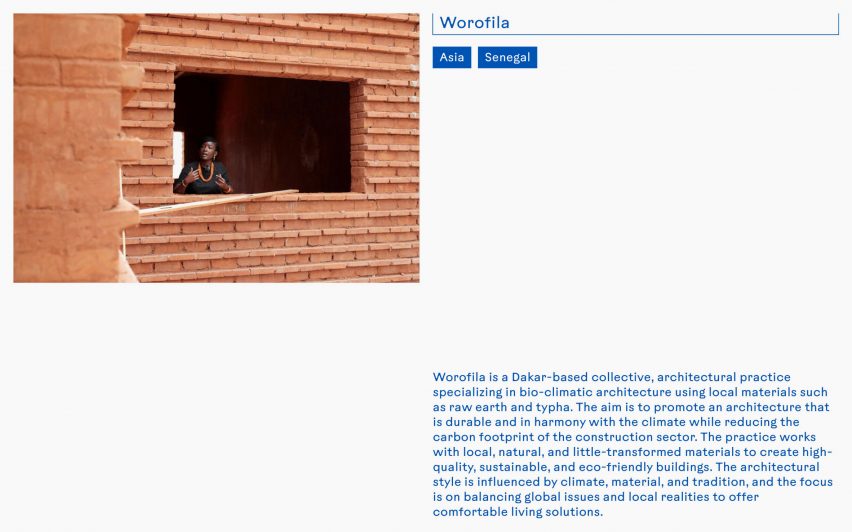
Non-Extractive Architecture directory aims to "accelerate transformation in the profession"
Design studio Space Caviar and philanthropic initiative Re:arc Institute have launched an online directory to showcase and support architectural practitioners challenging traditional ways of practice.
The open-access Non-Extractive Architecture directory features more than 700 trailblazers worldwide who "prioritise social justice, material awareness and long-term thinking" in their work.
It has been launched by Space Caviar and the Practice Lab branch of Re:arc Institute in response to the growing awareness of the damage that construction is doing to the planet and is hoped to encourage more design that alleviates this.

"As the scale and magnitude of the climate crisis we are collectively facing – and the central role the construction industry plays in accelerating it – become more evident, there is increasing awareness within the profession, especially among the youngest generation of the profession, that something must change," said Space Cavier founder Joseph Grima.
"Our goal is for the Non-Extractive Architecture project to be an accelerator of this change," he told Dezeen.
The directory is a continuation of Space Caviar's existing work exploring the concept of Non-Extractive Architecture – a term it coined to summarise a style of architecture that prioritises conserving, rather than exploiting, the Earth's resources.
Each practitioner a "useful part to a larger puzzle"
The studio released a book, Non-Extractive Architecture Vol 1, in 2019 and later began a year-long research residency with the non-profit private organisation V-A-C Foundation.
"The directory we are launching today represents the most ambitious phase of the project so far," said Grima.
"We didn't expect the book to receive as much attention as it did, and now sadly it's out of print and quite difficult to get hold of," he explained. "This is why we decided to go with an online directory – to keep it as democratic and open-access as possible and also to allow it to grow organically over time."
The directory is divided into six themes, named Timeless Ways of Building, Material Origins, The Politics of Construction, The Long Now, Building as Last Resort and Systems Architecture.

According to Grima, the categories are intended to maximise the directory's accessibility and help readers "take that first step of jumping in".
"We intend to document the work of everyone who we feel is making a sincere effort to contribute to meaningful change in the way in which architecture will be practised in the future," said Grima.
"This is not to say that their practice is necessarily devoid of critical weaknesses – it's more that we feel their work contributes one useful part to a larger puzzle."
"We hope it can accelerate the diversification of a profession"
Among the studios featured in the directory is Atelier Luma, a circular design lab based at Luma Arles that specialises in developing materials made from locally sourced bio-waste, various by-products and other under-valued materials.
Others include Field Architects, a nomadic studio that is developing ways to combine traditional and indigenous construction techniques with modern methods, and Dakar collective Worofila, which specialises in using local, low-carbon materials to create buildings best suited to their climate.
Atelier Aino – a French cooperative architecture workshop focused on retrofit instead of demolition – also features in the directory, alongside a women-led landscape design studio called ORU in Mexico that is dedicated to building resilience to climate change.
Grima said that the goal of the directory is to "accelerate a transformation in the profession by helping like-minded practitioners find one another and share knowledge".
"We hope it can accelerate the diversification of a profession that is far too male, western-centric and inward-looking – we hope it can be a well-structured, easy-to-use and inspiring source of contacts for clients, curators, editors and conference moderators who otherwise tend to default to the same familiar names," he explained.
Directory "can help inspire confidence"
However, he also hopes it can help motivate people who are "interested in approaching architecture differently", particularly the younger and emerging generation of architects.
"It is a heavily regulated field, and the current modus operandi can seem inescapable," he reflected.
"Seeing hundreds or thousands of other practices who have already found ways to question the prevalent assumptions about how design is practiced can help inspire confidence in the idea that it is possible to do things differently."
The non-extractive architecture(s) directory is an ever-evolving resource and it is welcoming other contributions for its expansion.
Grima shared details of the Non-Extractive Architecture project in a talk with Dezeen in 2021 and also in a manifesto written for the Dezeen 15 festival.
"In the face of clear and present danger, we have no choice but to rethink the predatory principles (towards habitat, towards each other) that modern industrial economies are optimised towards," Grima wrote in his manifesto.
The images are courtesy of Space Caviar.